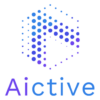The Future of Physiotherapy: Are We Ready for the Digital Revolution?
The way we treat musculoskeletal (MSK) conditions is changing fast. And no, we’re not talking about new stretches or fancy massage guns. We’re talking about algorithms, sensors, and a total shift in how people access physical therapy.
Digital physiotherapy is no longer a buzzword—it’s already here. The question isn’t if it will become mainstream. The real question is: are we ready?

What Is Digital Physiotherapy, Really?
Digital physiotherapy refers to using technology to deliver physical therapy services remotely. It often includes tools like:
- Wearable sensors to track movement and form
- AI-driven platforms to personalize treatment plans
- Telehealth sessions with licensed physical therapists
- Real-time feedback through apps or virtual coaching
It’s physiotherapy—minus the waiting rooms, commutes, and inconsistent adherence.
Why Is It Gaining So Much Traction?
Three reasons:
1. Convenience
Patients want care that fits into their lives, not the other way around. Digital therapy can happen at home, at work, or even during travel.
2. Accessibility
In rural areas or regions with few clinics, digital platforms eliminate the gap between need and access.
3. Data, Data, Data
Digital tools track every movement. This means treatment can be adjusted in real time, progress is measurable, and outcomes are easier to compare across populations.
Is It Actually Effective?
Short answer: yes.
Studies show that digital MSK programs are just as effective—sometimes more so—than traditional in-person sessions. Why? Because patients actually stick with them. Engagement rates are higher, and adherence to prescribed exercises improves when people can do them on their own terms.
A meta-analysis published in The Journal of Medical Internet Research found that digital interventions for MSK pain delivered outcomes comparable to face-to-face physiotherapy, with added benefits like reduced costs and improved access.
The Shift: From Therapist-Centered to Patient-Centered Care
This tech evolution is doing more than adding gadgets to the mix—it’s flipping the model. Traditional physio was all about scheduled appointments and therapist oversight. Now, the power is shifting to the patient.
They decide when and where they want to engage. They get feedback instantly. And therapists? They become more like data-driven coaches than manual technicians.
What About the Skeptics?
Let’s be real—some professionals are wary. The skepticism is understandable:
- Can technology really replace hands-on assessment?
- Will patients actually follow through without someone physically guiding them?
- Are digital solutions just a way for insurers to cut costs?
Fair questions. But the reality is, digital tools aren’t replacing therapists—they’re extending their reach. It’s about hybrid care: combining the best of both worlds.
Challenges We Still Need to Solve
It’s not all roses and recovery. There are real hurdles:
1. Tech Literacy
Not every patient is tech-savvy. Older adults or those without smartphones can fall behind.
2. Regulatory Frameworks
Digital healthcare lives in a grey zone of inconsistent regulations. Licensing across borders, data privacy, and reimbursement rules are all evolving (read: chaos).
3. Clinical Buy-In
Change is uncomfortable. Getting clinics and practitioners to adopt new platforms and workflows takes time—and proof.
So… Are We Ready?
Kind of. The tech is ready. The patients are (mostly) ready. But the system? Still catching up.
Healthcare has never been fast to adapt. But with rising healthcare costs, growing MSK conditions, and a population that expects on-demand everything, digital physiotherapy isn’t just the future—it’s the solution we’ve been stalling on.
The clinics, health systems, and providers who get ahead of this now won’t just survive the shift—they’ll lead it.
Final Thoughts: Time to Stop Watching and Start Moving
If you’re a healthcare provider, the time to explore digital physiotherapy isn’t later. It’s now. Start with a pilot program. Test a platform. Talk to your patients.
Because this revolution isn’t waiting for you to catch up.
And if you’re a patient? Don’t settle for outdated care models. The tools to improve your recovery are already in your pocket.
So the real question isn’t “Is this the future of physio?” It’s: why aren’t we all doing this already?
